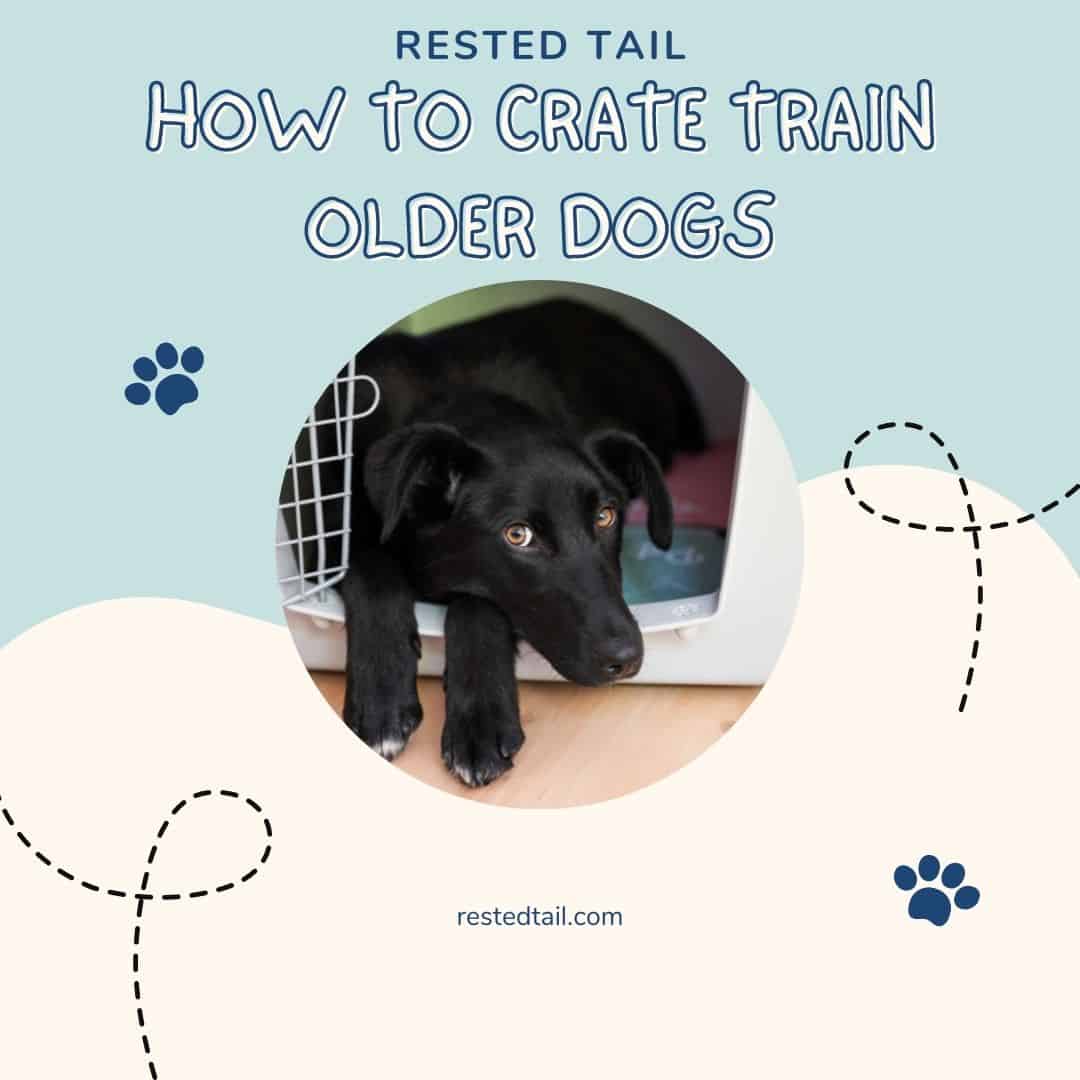Crate training is a popular method for housebreaking your pup. It also provides them with a safe and comfortable place to take naps or chill out when they are left alone at home. Most importantly, it can be an effective way to deal with separation anxiety from aging in dogs. But can you crate train an older dog with separation anxiety?
Sadly, many older dogs are surrendered to shelters because their owners cannot handle their separation anxiety. No one wants to end up in this situation. In this blog post, I will advise you on how you can crate train an older dog with separation anxiety at home.
What is a crate? A crate is a portable home for dogs that crates them when you can’t supervise them. Crate training is a great way to help dogs with separation anxiety! It not only helps them during treatment but also prevents destructive behavior around the home.
The symptoms of anxiety in adult dogs include heavy breathing, panting, shaking or trembling, pacing, drooling (or salivating), whining, or barking excessively at night or while trying to sleep.
Why is it more challenging to crate train older dogs?
The process of crate training your older dog can be complicated, but it’s a necessary step in their development. Older dogs learn faster than puppies, and you need to cultivate the habit sooner before they are accustomed to staying nearby instead of inside the crate. Be patient with them while you go through this stage together-it all works out in time!
As a dog ages, they are less likely to be reliably house trained and often have accidents. Dogs can also become incontinent as their bladder weakens with age; this can lead them back into puddles or on the floor if you’re not paying attention. What’s worse: Older pets might even tinkle out of excitement when around other animals like cats!
What causes separation anxiety in adult dogs?
There is no conclusive evidence showing exactly why dogs develop separation anxiety. Still, the leading cause of this behavior problem might be losing a significant person in their life or even loss of memory in older dogs, which makes them associate less with their surroundings.
Other less affecting changes such as abandoning the dog to a shelter or new family, change in your routine at home, or absence of a family member can lead to separation anxiety in older dogs.
Tips on how to crate train an older dog with separation anxiety
Steady Progress
While dogs may be uncomfortable with new changes, they will adjust to their crate in time. Use the following steps as a guide:
1) Leave your dog’s door open when using it for the first few times and gradually increase the duration of use while you’re home by closing it every 10-15 minutes before releasing them or letting them out.
2) After you establish this routine, close the door and let your pup remain inside during periods where no one is home (not overnight).
3) If after some days or weeks of doing these routines, there are still signs that he doesn’t like staying alone, then try other strategies such as leaving toys on the floor near the bedding area so the pet can keep busy playing if lonely.
Your Presence
Practice leaving the dog in the crate when you are at home, because if you only leave it there when you leave, your dog will associate being in the crate as a bad thing that implies loneliness.
Comfortable Crate
Make the cage the most attractive and cozy place for your dog, leave some toys inside, surprise treats, maybe a shirt with your scent on it to make your dog feel close to you. Check out my other blog on the best dog crates for separation anxiety.
Dog Crate Bed
Use a special bed for dogs with separation anxiety. These beds have the main function to reduce stress, are comfortable, keep warm and relieve joint pain. You can find the ideal bed for your dog here.
Interactive Toys
Dog bones or interactive toys are perfect for preventing separation anxiety in dogs by giving them mental stimulation as well as physical with fun surprises that encourage playtime. These are excellent for tiring out a dog who’s been at home alone all day!
Brain Training For Dogs
Train your dog with Brain training for dogs! You can use this easy-to-follow online course with step-by-step instructions that can help you train your dog to deal with behaviors such as separation anxiety, its causes, and symptoms.
Brain training for dogs aims to keep your pet engaged in play, calming his mental and physical energy.
Frequently Asked Questions
Can you crate train an older dog?
Absolutely, older dogs can learn new tricks, but it will require a little more patience than usual. Also, it depends a lot on the dog’s personality.
Adult dogs usually have their determined behavior and routines, and they do not learn as fast as a puppy. It is necessary to do repetitions and reward your dog often with nice treats.
When you crate train an older dog with separation anxiety, you remove destructive behaviors, fears, or if your dog was not properly trained at home when it was younger.
Does crate training help with separation anxiety?
The crate is a haven for many dogs! When they feel anxious, lonely, or scared-they can go to their “den” and be calm. This makes it easier on you because there will be less destruction in the house when your dog has something to retreat to.
Crate training puppies from an early age also helps them know that this is where they belong at all times, so separation anxiety isn’t as big of a concern later on in life.
In Conclusion
Crate training an old dog with separation anxiety is an excellent way to make them feel safe and comfortable while you’re away. To do this, try to make sure your pet feels like they can explore their crate’s space without being afraid of getting stuck in a corner or on one side. Also, put toys inside that are unique for them to associate time spent there with fun activities instead of negative ones. It might take some work, but if you follow these tips, it’ll be more straightforward than ever before!
Sign up for Brain Training For Dogs.
Recent Posts
As a dog owner, you want to ensure that you take proper care of your furry companion. A common question that many pet owners have is, "Can I walk my dog 30 minutes after eating?" Understanding the...
Have you ever considered getting an elevated dog bed for your furry friend, but wondered if it's worth the investment? If so, you're not alone. As dog owners, we all want to provide the best care for...

